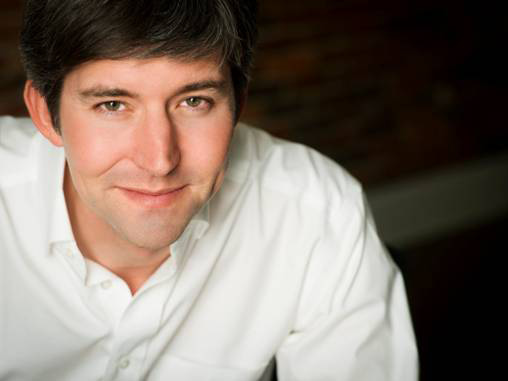A collection of stories, in anticipation of the 21st Session of the Conference of the Parties to the United Nations Framework Convention on Climate Change
In this, the first of a four-part series, Christopher LaBorde takes a look at the UAE’s HVAC sector. He believes the country has positioned itself for progress.

Christopher LaBorde, Business Development Manager for the MENA Region at TrakRef.
On January 4, 2014, I had breakfast with the refrigerant gas recycler, Ted Atwood of Polar Technologies. Ted was one of the last people I saw before I moved from the United States, to split time between the UAE and my home in Louisiana. Ted mentioned that he was working on a HVAC refrigerant gas tracking and workflow software project, and that if I wasn’t already committed to another project, I should take a look at the UAE market.
I had come to the UAE for a 10-day trip, two months earlier, and the UAE market appeared to not be suffering from problems plaguing the United States. In fact, the UAE had a very inspiring sense of willingness to embrace change if it meant securing its future as one of the more influential countries in the world. It even seemed to be leveraging its position as an oil-rich country for the purpose of shaping a better future for its people, by importing educators, top-level education facilities and technologies.
In the past, I had done research on many infrastructure technologies and had access to a wide variety of technologies that could be useful for any emerging nation. Armed with a list of UAE contacts and a willingness to learn how the UAE worked, I was determined to figure out the landscape and which technologies may be most useful to the UAE.
After 10 weeks, two trips, and over 50 meetings, the answer was clear, the UAE had an appetite for sustainable and energy-efficient technologies. More specifically, the leaders of the UAE were seeing what was happening with Saudi Arabia, and the Gulf in general, and wanted to reduce their demand-side energy needs, and for this, Ted’s project was perfect. Now all I had to do was learn more about the HVAC industry.
If I was going to engage in business development for this technology, I needed to fully understand the problems of this industry in the UAE and the rest of the world for comparison. All of my background and experience up to the point, though, had not prepared me for the discovery of how ready the HVAC industry is for change around the world and how incredible the opportunity is for profound change.
In 1902, Willis Carrier developed much of the technology that shaped the modern-day HVAC industry. Some of the bigger problems in the HVAC world were also born on that day, and haven’t experienced much change since then. Like many of the industries in the infrastructure world, most of the problems are unknown to people that have the corresponding experience in solving these problems. As a result, the problems seem to grow in isolation away from the eyes of the actual creative people that can solve them. An example of a similar problem to this is the liquid infrastructure problems in the United States. Most people do not know that the US has roughly a one trillion-dollar problem that they will have to solve over the next 20 years when it comes to getting clean water to their people, and wastewater away from them with a deteriorating piping network. Just like the water industry in the United States, most people do not fully understand how much of the energy spend is for the heating and cooling industry and how ready it is for disruption.
An example of a company taking advantage of the unexplored values in HVAC optimisation is Nest Labs, which built a self-learning, “smart” thermostat that had Web access to create an opportunity for the power bill payer to get the same or better air temperature comfort at a lower price through a smart device. At first, the idea seemed like a gimmick to many people, but later, as the details of Google’s USD 3.2 billion-dollar purchase of Nest Labs in January of 2014 became known, everyone began to take a serious note.
A big part of its strategy was to turn data into intelligence for the power bill payer. In this definition, “data” is raw information that can be gathered and created in any number of ways, and “intelligence” is what that information looks like after it has been purposely processed into something the person making the critical decisions can easily use.
The more I learnt about the HVAC industry, the more it started to look like an industry that had large gains available in it, especially in the parts of the world that cannot function well without having their natural climates altered for the majority of the people living in them. The UAE started to shape up to be just such a place.
To be continued…

Clare Perry, representative of the Environmental Investigation Agency (EIA)
Opposition from some GCC states delays progress in the complete phase-down of HFCs, says a representative of the Environmental Investigation Agency (EIA), in an exclusive interview with Climate Control Middle East, in which she reveals that the GCC states opposed the phase-down over concerns related to availability of viable alternatives suitable for high-ambient temperatures
The 35th meeting of the Open-Ended Working Group (OEWG35) of the Parties to the Montreal Protocol on Substances that Deplete the Ozone Layer was held in Bangkok in April 2015. A two-day technical workshop, followed by a three-day political meeting, was dedicated to the issue of managing hydro-fluoro-carbons (HFCs).
There were high expectations at the start of the meeting after India, previously one of the strongest opponents, submitted its HFC phase-down amendment proposal. The proposal, in combination with those previously filed by the North American countries and Micronesia and the efforts of the African group, brought new energy to the negotiations, with the vast majority of developing and developed countries in favour of a phase-down of HFCs under the Montreal Protocol. However, strong opposition from Pakistan, Saudi Arabia and other Gulf states, revealed that there remain serious obstacles.
Excerpts from the interview with Clare Perry, conducted by Rajiv Pillai, Features Writer at Climate Control Middle East…
Can you tell us why there was opposition from some of the countries? And how do you think the issue can be resolved ?
The primary opposition seems to have come from Saudi Arabia, Bahrain and Kuwait. The reason stated for their opposition is concern over the availability of HFC alternatives that work in the high-ambient temperatures that they typically experience. However, their opposition may be related to the ongoing climate talks under the UNFCCC. While there is certainly an additional challenge in phasing out HFCs in high-ambient temperatures, there is enormous innovation in technology and increasing availability of alternatives. Also, the proposals on the table do not envisage immediate action by the so-called A5 countries, like the Gulf countries – the proposals are for a gradual phase-down of HFCs (not phase-out), starting in five to 15 years, depending on the proposal.
India was one of the strongest opponents but now has submitted its HFC phase-down amendment proposal. Could you share any insights on why India is on board now? Is it owing to the new leadership in place ?
India submitting a proposal is in line with what was agreed by Prime Minister Narendra Modi when he visited the US in September, last year, and we hope this indicates new climate leadership from India; however, the proposal itself is sadly lacking in ambition. For A5 countries, including India, their proposal allows unconstrained growth of HFCs for the next 15 or so years, and then requires that developed countries pay for all costs to convert out of HFCs, rather than incremental costs, which is the usual mechanism of the Montreal Protocol. So developing countries would have a huge financial incentive to expand HFC production and use, even when HFC-free alternatives are available. We should be doing the opposite; we should be avoiding growth, wherever possible, and building incentives for developing countries to leapfrog HFCs rather than make the mistake that developed countries have in phasing in these super greenhouse gases. Even for developed countries, which are already taking unilateral action to phase-down HFCs, India’s proposal allows a great deal more HFC consumption than any other proposals on the table.
When, do you think, will we see a complete global phase-down of HFCs ?
In terms of agreeing an amendment to the Montreal Protocol to phase-down HFCs, this is entirely possible to achieve this year or the next year, but there is a lot of work still to be done to be sure we have a fair and effective agreement, where all countries are on board. There seems to be a genuine will from the Parties to the Montreal Protocol to work hard to achieve this – we had an additional inter-sessional meeting in April in Bangkok, and there is another smaller additional meeting this month, followed by the usual Open-Ended Working Group in July in Paris. To complete the phase-down of HFCs will take many years – most of the proposals envisage phasing down to about 10-15% by 2040-2050, so clearly we need to start soon.
Eurovent claims its Certita Certification contributes to the COP21
With more than six million units installed in Europe, heat pump’s renewable energy from air, water and ground can be used efficiently to provide 100% of a building’s heating, cooling and hot water demand and reduce GHG emission. Sharing this information, Eurovent Market Intelligence, the European statistics office on HVACR market, revealed that according to estimates heat pumps could save 50% of the building sector’s CO2 emissions for heating and cooling and five per cent for the industrial sector, corresponding to nearly eight per cent of total global CO2 emissions.
COP21, the 2015 Paris Climate Conference, said Eurovent, will aim to achieve a legally binding and universal agreement on climate, with the objective of keeping global warming below 2 degrees C. In this context, the impact of the heating/cooling demand of buildings will be significant, and the heat pump industry needs to prepare now, Eurovent pointed out. It claimed that this was where product performance certification, delivered by Eurovent Certita Certification, would play a key role in ensuring transparency and in delivering reliable data.
Eurovent shared the results (see table) of a study it carried out based on 2014 sales data collected from 280 manufacturers of heat pump and chillers units <100 Kw.
Eurovent claimed that its certification applied to all heat pump applications: air to water, brine to water, direct expansion, domestic hot water, and air to air.
| Eurovent Certified Performance Penetration Rate | HP – Chillers 0-100 kW |
| Belgium | 67% |
| Czech Republic | 25% |
| Denmark | 38% |
| Finland | 49% |
| France | 90% |
| Germany | 55% |
| Italy | 59% |
| Netherlands | 49% |
| Norway | 37% |
| Portugal | 43% |
| Russia | 87% |
| Slovenia | 82% |
| Spain | 48% |
| Sweden | 45% |
| Switzerland | 45% |
| Turkey | 37% |
| United Kingdom | 30% |
| UE 28 | 66% |
© Eurovent Market Intelligence Sales Data 2014
Copyright © 2006-2025 - CPI Industry. All rights reserved.